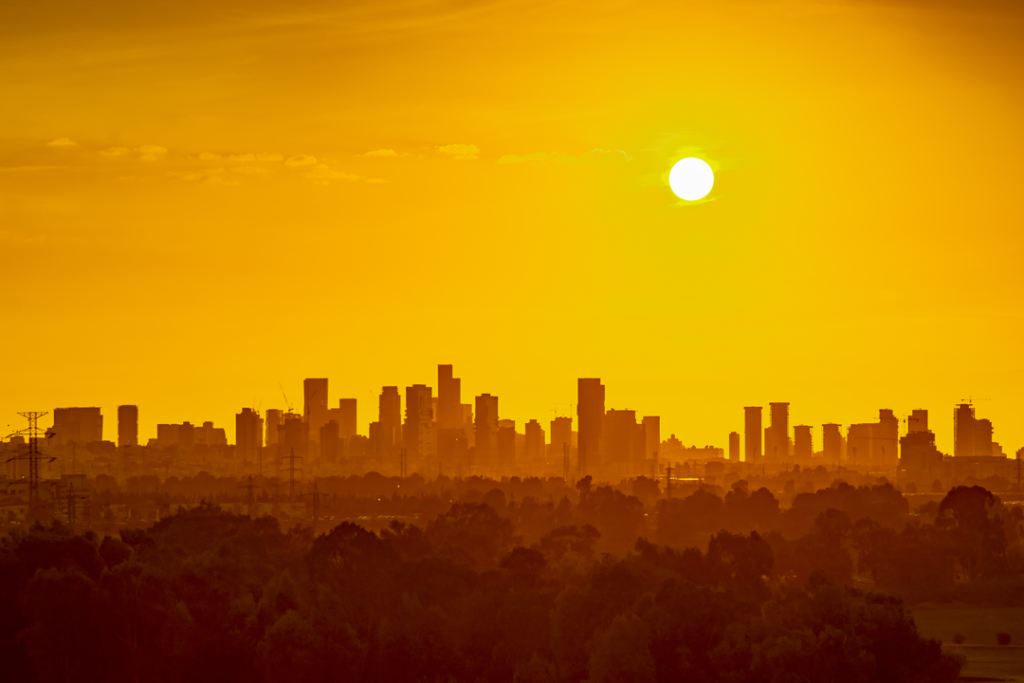Climate change is intensifying heatwaves in India, increasing the number of extreme heat days. A recent report by the independent research organization Sustainable Future Collaborative highlights that 11% of India’s urban population lives in cities most vulnerable to heatwaves.
Scientists found that if a city experiences heatwave conditions for one day, the daily mortality rate increases by 12.2%. If the heatwave persists for two consecutive days, the mortality rate rises to 14.7%. When the heatwave lasts for three days, the mortality rate increases to 17.8%. If extreme heat continues for five consecutive days, the mortality rate can surge up to 33.3%.

Rising Night Temperatures Add to the Crisis
Experts warn that both day and night temperatures will remain high due to climate change, placing significant stress on the human body. This will lead to an increase in heat-related illnesses and deaths. In the coming years, heatwaves could reduce India’s work productivity by 15%, affecting the quality of life of 480 million people.
Most Heatwave-Vulnerable Cities
Mumbai, Delhi, Kolkata, Chennai, Bengaluru, Gwalior, Faridabad, Meerut, Surat, Kota, and Ludhiana are the most affected by extreme heat.
According to the India Meteorological Department (IMD), by 2060, the duration of heatwaves in India could increase by 12 to 18 days, particularly in the northwest region, where heatstroke risks are severe.
Need for Immediate Disaster Management Plans
The survey found that long-term plans to combat heatwaves are inadequate. Aditya V. Pillai, co-author of the report, emphasized the urgent need for strategic action to reduce heatwave-related deaths in the next decade. Meanwhile, a parliamentary committee has recommended that heatwaves be classified as a natural disaster and integrated into disaster management plans.
Key Recommendations to Combat Heatwaves
- Urban heat island mapping and installation of low-energy cooling devices.
- Worker protection measures and insurance against heat-related job losses.
- Heatwave wards in hospitals, training for healthcare workers, and increased ORS availability.
- Cool roofing solutions in urban areas to regulate indoor temperatures.
- Rainwater harvesting to address water shortages.
- Improved forecasting systems and heat-resistant road materials.
Lack of Coordination Among Government Departments
- A survey of nine cities with high heat index levels found that 11% of the urban population is at risk.
- Surat has a city-level heat action plan, while Meerut has a district-level plan. Delhi, Mumbai, Kota, and Faridabad have state-level plans, but Gwalior and Ludhiana have no plans.
- 26% of officials admitted that there is poor coordination between disaster management and other departments.
- 16% of officials said heatwaves are not a priority.
- 14% of officials do not consider heat a serious issue.

Strawberry Hit by Heatstroke
Mahabaleshwar, India’s strawberry capital, is facing its worst season in five to six years due to mild winter, early summer, and water scarcity. With day temperatures exceeding 30°C in March and falling water levels in Venna Lake, yields have dropped sharply. The Strawberry Growers’ Association of India estimates a 5-6 tonne per acre decline this season. The hill station typically supplies fresh strawberries to markets until mid-April.
Farmers are abandoning fields due to poor fruit quality and low prices. Sunburn and sunspots have further affected production. Darshan Kadam, a horticulture expert, confirms that erratic weather has severely impacted both strawberry quality and market value.
Heatwave Intensifies Across India
It is worth noting that at least one spell of heatwave has already occurred in 10 states in March. In several parts of Gujarat, Maharashtra, Rajasthan, and Odisha, temperatures exceeded 40°C. Similarly, Karnataka, Andhra Pradesh, Maharashtra, and Telangana have also recorded temperatures above 40°C.
The IMD has predicted that April and May will experience above-normal heatwave conditions. In most states, both day and night temperatures will remain higher than usual, and new temperature and heat records may be set every month.
